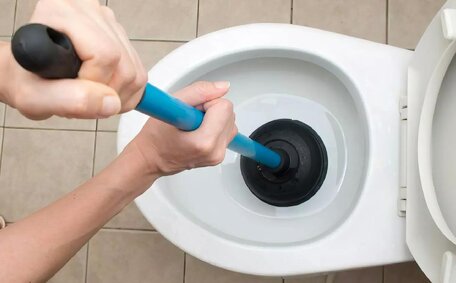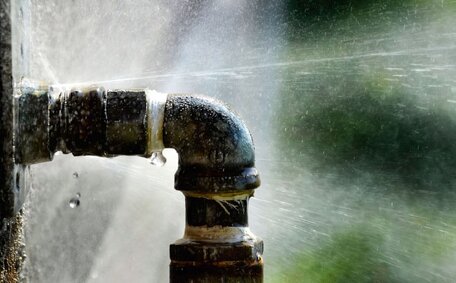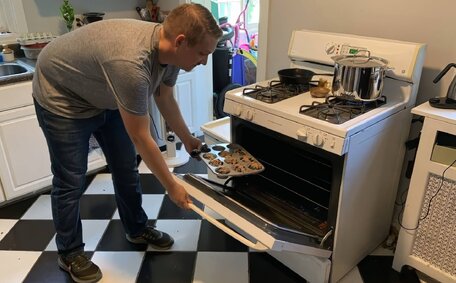Introduction to Using Gas Stoves Without Power
Knowing how to safely operate your gas stove during power disturbances is an essential skill for households in blackout-prone areas, including those we assist in Brighton-Le-Sands.
This guide outlines how to manually light stove burners, explains why ovens should not be used during outages, and suggests alternative cooking methods and precautions for using gas appliances without power.
We’ll cover key steps for igniting your stove manually, how to keep food heated, what issues may arise for water heaters and certain appliances, safety considerations, and tips on preparing for outages. Knowing how to use your gas appliances during a blackout helps prevent hazards and maintain safety.
How Modern Gas Appliances Work
Contemporary gas stoves and ovens often need electricity for ignition, digital controls, and fans, and won’t operate during a blackout.
Most gas appliances manufactured after the mid-1990s require power due to an interlock device that prevents gas from flowing when power is absent. This important safety mechanism ensures that gas cannot leak from the inactive appliance.
Thus, modern gas ranges won’t ignite during a power outage. Some gas stoves can still be lit manually by turning the knob and holding a flame near the burner, provided they have a pilot light.
Stovetops With Electronic Ignition
Many modern gas stovetops’ electric ignition systems require electricity to light the burners. These systems generate an electric spark to ignite the gas when you turn the control knob. Without power, this automatic ignition won’t work; power is essential for these features.
Some models may be manually ignited by turning the knobs to 'Lite’ and applying a match or lighter to the burner. When doing so, take safety precautions by tying back loose clothing and hair, and keeping flammable items away from the burners.
Consult your stove’s user manual to check if manual ignition is possible.
If manual lighting isn’t possible, you have some alternative cooking options like using a camping stove, fireplace stove, sterno can stove, or outdoor grill. Ensure portable cooking devices are only used in well-ventilated areas and never indoors.
During extended outages, opt for simple meals that don’t need the oven and use stored fuels such as propane to conserve your natural gas supply. And remember that safety should be the number one priority when improvising without power.
Ovens That Require Electricity
Since contemporary gas ovens need electric ignition and fans, they will not operate during power outages.
It is generally not recommended to try manually lighting a gas oven without power. Gas ovens are designed with many safety mechanisms that regulate temperature and gas flow. Attempting to override these features can result in a gas leak, explosion, or fire.
Non-functional internal fans can lead to dangerous accumulations of heat and gas in the oven. Most residential gas ovens also lack a manual gas shut-off valve, so if something goes wrong, you have no way to stop the gas flow.
For cooking during an outage, use manual burners or outdoor cooking solutions like sterno and camping stoves. Avoid any manipulation of gas ovens without power.
If you’re preparing for an emergency, have back-up cooking supplies ready including options for tankless water heaters. Make sure you’re also able to use your working fire alarms, carbon monoxide detectors, and an emergency escape plan. Safety should be the top concern when the power goes out.
Manually Lighting Your Gas Burners
Older gas stoves, lacking electronic ignitions, can often be lit manually during an outage. To light the burners, turn the knob to the highest setting and hold a long match or lighter near the burner until it ignites.
Take proper safety precautions before attempting to manually ignite your gas water burners without power. Make sure you have adequate ventilation, tie back loose clothing, remove flammables from the area, and have a fire extinguisher on hand. Avoid leaving active burners unattended.
Only light your burners if you have clear manufacturer instructions showing this is approved for your stove model. Improper use can lead to a gas leak or explosion. If you are at all unsure about manually operating your gas appliance without power, refrain from doing so and use alternative cooking methods.
Ensure smoke and carbon monoxide detectors are working correctly before operating gas appliances without electricity. Have an emergency plan and access to a phone in case problems arise while cooking without power.
Step-by-Step Instructions
Follow these key steps to safely manually light your gas stove burners if approved for your model:
- Clear the stovetop of any objects, tie back clothing, and remove flammables from the area.
- Turn all stove knobs to the off position before beginning.
- Use long-reach matches or a barbecue lighter when manually igniting.
- Select one stove burner to light. Turn the control knob to the highest setting.
- Hold the ignited match or lighter flame at the burner head until it ignites and stays lit.
- Repeat to manually light additional burners as needed. Never leave active burners unattended.
- Adjust flame height as desired. Use proper ventilation while cooking.
- When finished cooking, turn all control knobs clockwise to the off position.
- Allow residual gas to dissipate before attempting to relight burners.
Always prioritise safety when manually operating gas appliances during power outages. Refer to your owner’s manual for proper procedures. Refrain from trying to ignite ovens, as they present substantial risks without electricity.
Safety Precautions
When using your gas stove during a power outage, following key safety precautions is critical:
- Frequently check for gas leaks and unusual odours. If you smell gas, immediately turn off the gas line to your home and appliance then evacuate until safe.
- Maintain a clear area around the stove by keeping combustibles such as dishtowels and flammable liquids at a distance.
- Have a fire extinguisher on hand. Make sure it is labelled for use with grease/oil fires from cooking.
- Avoid wearing loose-fitting clothing that could catch fire while cooking over an open flame.
- Use long-handled barbecue lighters when manually igniting burners.
- Always stay near active burners and never leave them unattended, even for a short period.
- Keep children and pets away from the cooking area.
- Refrain from moving the stove or reconfiguring gas lines yourself.
- Make sure smoke and carbon monoxide detectors are functioning.
- Have alternate cooking supplies like propane or sterno stoves in case issues arise.
Exercising caution is imperative when improvising without power. Refer to your appliance manual for additional safety guidance. If at any point you smell gas or can’t operate devices properly, discontinue use for your safety.
Ventilation Requirements
Proper ventilation is critical when operating any gas appliance, particularly during a power outage when you may have windows and doors closed. Gas stoves and ovens can generate dangerous levels of carbon monoxide very quickly without adequate air circulation.
Ensure there are external windows or doors that can be opened in any room with a gas appliance. Cracking it just an inch or two allows enough fresh air for ventilation. Avoid any enclosed space.
Avoid obstructing ventilation ducts or appliance vents, especially for those that depend on electricity for safety. Most codes require clearance of several feet. Keep the area around your water heater, gas stove, and oven free of items that could impede airflow.
If you begin to feel symptoms like dizziness, nausea or headaches, immediately get fresh air and have your gas appliances inspected prior to continued use. Using spill-resistant burners can also help avoid dangerous gas buildup.
Keep air circulating as some appliances still function whenever gas appliances are being used without power. Follow all manufacturer guidelines, have working carbon monoxide detectors, and do not hesitate to call for assistance if issues arise.
Monitoring for Carbon Monoxide
Carbon monoxide is an odourless, colourless gas that can be deadly if inhaled. Gas stoves and ovens produce carbon monoxide, so operating them without adequate ventilation during a power outage poses a severe risk of poisoning.
Ensure you have operational carbon monoxide detectors in your home, particularly close to where you sleep. Install new batteries in all detectors before any storm or outage season to ensure they will work if needed.
Pay attention for symptoms of carbon monoxide accumulation like dizziness, nausea, chest tightness, and headache. If detectors alarm or you experience any concerning symptoms, evacuate the area immediately and call emergency services once outside.
Seek fresh air outdoors and wait for firefighters to deem your home safe from gas. Do not re-enter until given the all clear. Get your gas appliances inspected for proper function before using them again after carbon monoxide concerns.
Maintaining working detectors, adhering to appliance instructions, and knowing poisoning signs are vital for staying safe from this silent killer. Do not take risks with inadequate ventilation or symptoms of exposure during an outage.
Alternative Cooking Methods Without Power
When the power goes out, there are several alternative cooking methods you can utilise besides your gas stove:
- Outdoor grills - Utilise charcoal or propane grills for outdoor cooking but ensure they remain outside.
- Camp stoves - Portable camping stoves that run on small propane canisters provide a cooking surface and heat. Use in well-ventilated areas.
- Canned heat - Use sterno cans to warm food; ensure they’re on a stable surface, distanced from combustibles.
- Solar ovens - On sunny days, solar ovens can trap heat to slowly cook meals. Models with a battery backup can be used even during outages.
Make sure to keep safety as the priority when adapting without power. Have functioning carbon monoxide and smoke alarms, follow manufacturer guidelines, and refrain from taking risks. Be prepared with backup cooking supplies and knowledge of how to improvise during an outage.
Preparing Your Kitchen for an Outage
Prepare your kitchen and hot water system for potential outages to ensure readiness and safety. Having emergency supplies on hand and understanding how to safely use gas appliances without electricity are important.
Keep a supply of flashlights, batteries, manual openers, and non-perishables on hand. Store enough potable water, including reserves for your water system, for several days’ use. Ensure propane tanks are full for emergency use with grills or camp stoves.
Keep a battery-powered radio to remain updated on outage details, safety alerts, and the condition of crucial appliances such as gas water heaters. Make copies of key appliance manuals with instructions for emergency operation.
Ensure carbon monoxide and smoke detectors are working and have fresh batteries. Place detectors appropriately near any gas appliances. Keep an ABC-type fire extinguisher handy specifically designed for grease fires.
Set your fridge and freezer to maximum coldness before outages to prolong food preservation. Keep them closed to maintain the cold temperature.
To protect against surge damage, disconnect major appliances before storms. Turn off and disconnect any unnecessary electronics to reduce the load on your circuits.
Proactive preparation allows for safer and more assured use of your gas stove during power outages.






